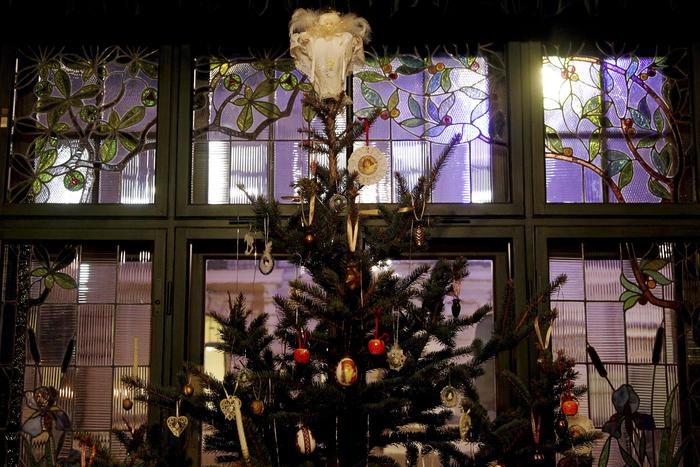In the year of the green Christmas , the question arises: are natural or plastic Christmas trees more ecological? Certainly those that we do not throw away on January 7 after the holidays, whether they are fake to store for a whole year, or whether they are real in pots as far as on the balcony or terrace with the summer heat unless you reside in Northern Italy hardly 2020 will arrive on December 8th (the classic date for starting home decorations). There is nothing more anachronistic and painful than seeing the poor tree without feet or roots, half-dried, upside down in the dumpster at the end of the holidays. Absolutely the most ecological of the trees is the one that is recycled, year after year, perhaps changing decorations aiming for new inspirations - an idea: the Christmas tree to eat, discover it here . For an average plastic Christmas tree (about 10 kg) you need 20 kg of oil and 23 kg of CO2 emitted into the atmosphere, to which is added the oil used for transport from China, from which 80% of these comes products. It is estimated that it takes 2 centuries to dispose of them. The source is the association of Italian nursery gardeners which in December estimates an increase of 10% for the purchase of natural Christmas trees, with a total turnover of 30 million euros. Despite the positive trend, synthetic firs still prefer to enter Italian homes (7 out of 10 of the 12 million trees sold), with significant damage to the environment.
“Fortunately - declares the president of the association, Aldo Alberto - raising awareness of sustainability issues has increased the demand for natural fir trees, surprising even producers, including many young people who are restoring horticulture in mountain areas for meet this growing market share. Italian trees are generally spruce trees , widespread especially in the eastern Alps, and white fir trees in the Apennines. In Italy the production is concentrated in Tuscany and Veneto but our goal is to compete with Germany, where the cultivation of Christmas firs reaches almost 20 million trees produced ".
"It is important - Alberto underlines - to fight fake news and remind consumers that Christmas firs are not uprooted from the forests but come from nursery companies where they are grown specifically for the holiday market and are planted again after the sale" .
Historically, Ikea has been the forerunner in Italy of at least the campaign for natural trees, repaying the amount spent after the holidays have been returned. With "Compostiamoci bene" by Ikea, the Swedish company also supports redevelopment projects in areas at high risk of hydrogeological instability. The association of Italian Nurserymen hopes to prefer real trees to synthetic ones to also help the development of the Italian sector, "increasing the income of populations living in rural areas. The beneficial effect on the environment is also important for the contribution to the reduction of the CO2 assimilated during their growth and for the prevention of hydrogeological degradation. Cultivation in Italy, moreover, guarantees the freshness of the product, as it is cut a few days before delivery and shaped like a cone throughout the cultivation to make the branches compact ".
In our homes the size of the Christmas trees has decreased, also due to the reduced space in the houses. In detail, more than 70% of Italians focus on "shorter" trees, spending on average between 20 and 40 euros. To allow yourself the luxury of exceeding two meters in height only 5% of Italians, who also spend 100 euros on the Christmas tree. While to decorate the courtyards of condominiums you can get up to 400 euros for even taller trees. In the city squares there is a competition of height: the now famous Spelacchio in Rome is 23 meters high, while Milan stands at 37 meters with the tree of Piazza Duomo entirely of lights , with low environmental impact, powered by energy from renewable sources . The rental phenomenon is growing, but it is still very expensive and can go up to 1500 euros for a 4-meter tree.
Having chosen the natural tree, here are some valuable tips:
Only firs with roots should be chosen, wetting the sod regularly and placing the tree at a safe distance from the heaters.
Heavy decorations should also be avoided so as not to break the branches or scatter too many needles on the floor.
You don't even have to spray synthetic snow because the tree is alive and breathing.
After the Epiphany you can replant in the garden and those who live in the city and do not have a green space will be able to recycle it easily, composting it so that it returns to soil and completes the ecological balance or use it to light the barbecue.
One last curiosity for those who have pets: even veterinarians recommend natural trees compared to synthetic ones. Our pets do not like to be stung by needles and will hardly climb on natural fir trees as they do on fake Christmas trees, avoiding damage or small domestic accidents.

